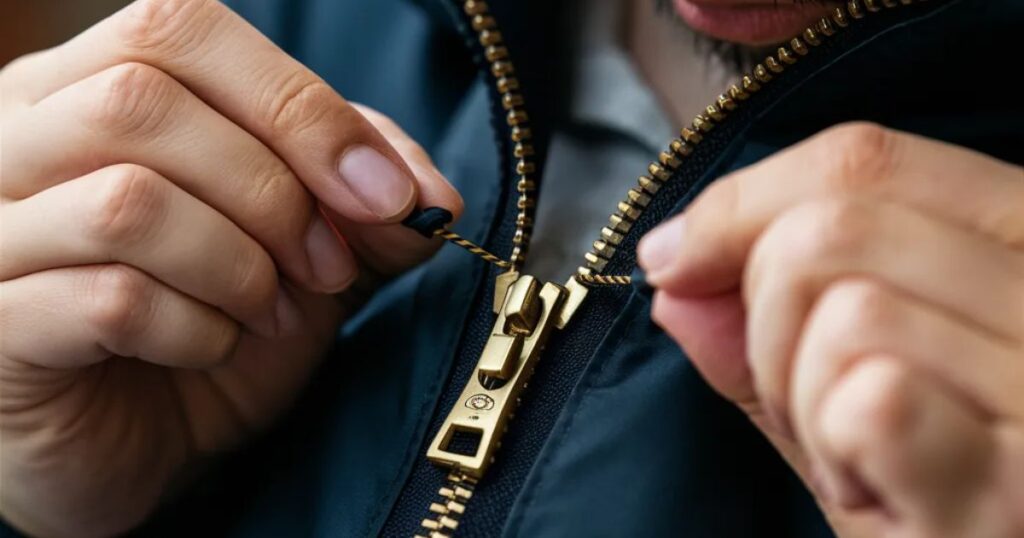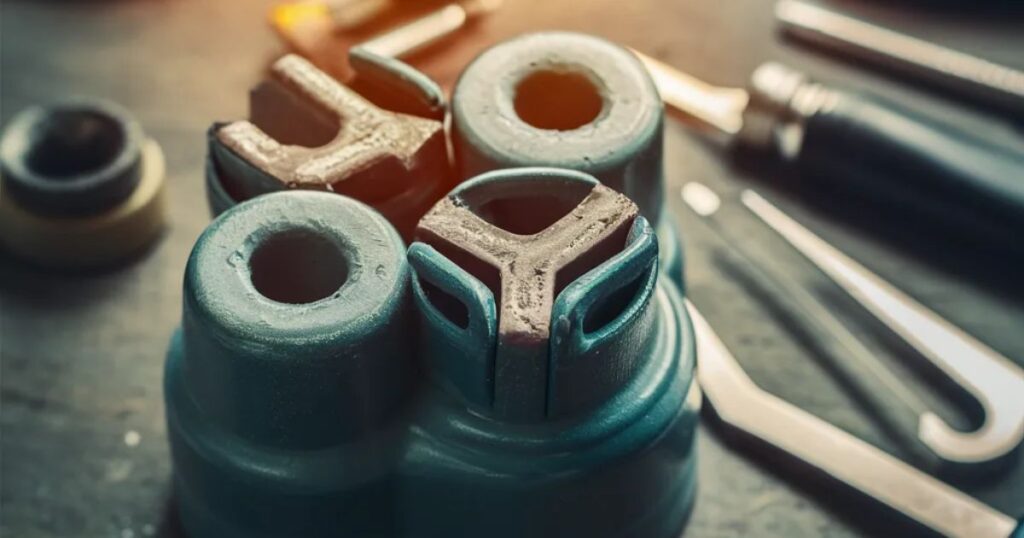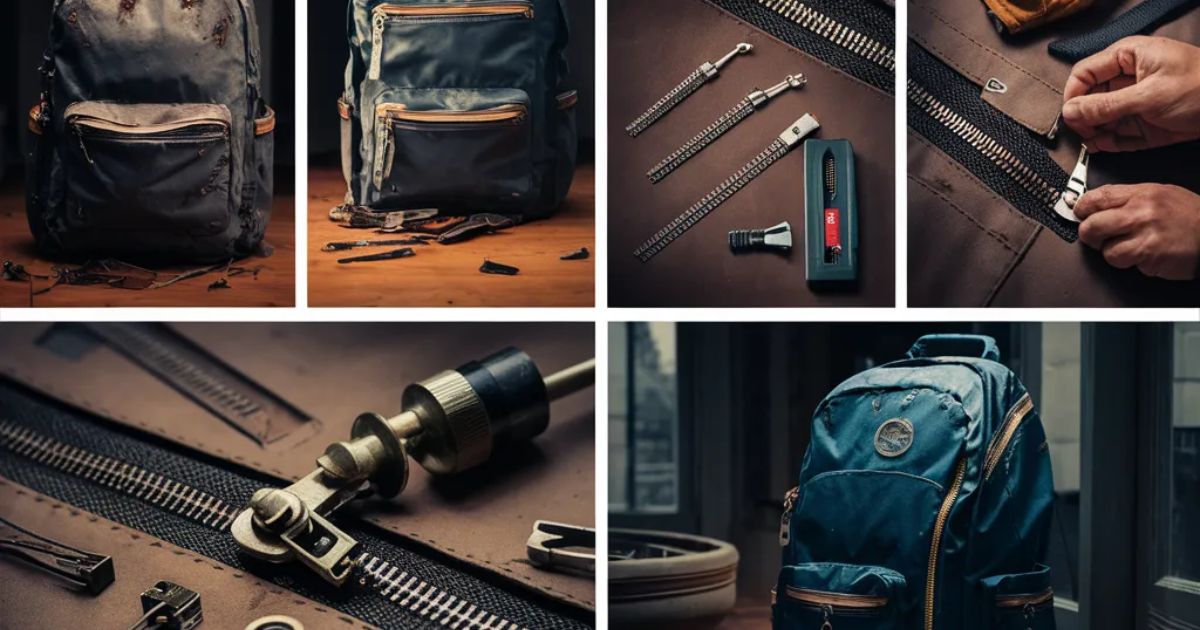Ripping that zipper on your trusty backpack is an all-too-common nightmare. You’ve lugged that comfy bag through countless school days, hikes, and vacations – it’s practically part of the family.
The thought of replacing your beloved backpack seems wasteful and losing that sentimental value stings.
Well, fear not! With some simple tools and this step-by-step guide, you can easily repair that broken zipper yourself and keep using your favorite backpack for years to come. Let’s get that zipper working like new again!
What You’ll Need
To DIY this zipper repair, you’ll want to gather:
- Pliers (needle-nose pliers work best)
- Seam ripper or razor blade
- Scissors
- Heavy-duty thread & needle (for re-stitching)
- Pencil or chalk (for marking stitching lines)
It’s also handy to have:
- Zipper repair kit (includes zipper pulls/stoppers)
- Beeswax for coating thread
- Magnifying glass (for close-up work)
With your kit prepared, you’re ready to tackle that malfunctioning zipper! There are two main methods depending on if the zipper pull detached completely or is just stuck.
Fixing a Zipper Pull That Came Off

If the metal zipper pull broke off entirely, you’ll need to remove the fabric stitching, rethread the pull, and resecure the whole zipper.
While fiddly, this zipper teeth restringing allows you to essentially rebuild the whole mechanism. When CHOOSING THE RIGHT BACKPACK, consider the durability of its zippers for easier maintenance.
Step 1: Remove the Zipper Stitching
First, use a seam ripper or razor blade to carefully remove the stitching lines at the base of the zipper track on both sides of the backpack. This detaches the fabric from the metal zipper coils.
Go slowly to avoid damaging the backpack material. A few small slits with the seam ripper blade should allow you to pull out the thread completely.
Pro Tip: Use a sharp razor blade or designated seam ripper to cleanly slice the threads without fraying the zipper fabric.
Show Image
Step 2: Reshape the Zipper Pull
Closely examine the detached metal zipper pull. If it’s warped or misshapen from years of use and abuse, you’ll need to carefully reshape it using pliers.
Pinch the pliers around the curved area and compress slightly to reform that smooth body. Don’t squeeze too hard or you could break the pull! Take it slow and check the shape frequently until it looks circular and even again.
For extra grip, use rubber jaw pliers or wrap the metal pull in a thin cloth before pinching. This protects the soft metal from dents and grooves.
Step 3: Rethread the Zipper Pull
This part requires some finesse and patience. You’ll need to get that newly shaped zipper pull rethreaded onto the zipper’s teeth one coil at a time.
Use the tip of the pliers to carefully pull the first coil onto the narrow metal channel. Then gradually walk it down the rest of the zipper teeth, realigning each coil as you go. It’s tedious, but having the right shape makes it easier.
If you get stuck, use tweezers, a crochet hook, or a small flathead screwdriver to help guide the teeth through the channel. Take breaks as needed to avoid frustration!
Step 4: Realign the Zipper Coils
With the zipper pull rethreaded, you may find the coils aren’t perfectly aligned still. Gently run the pliers down the zipper teeth once more, using the curved tip to nudge each piece into proper parallel positioning.
Test the zipper movement and make sure it runs smoothly from top to bottom without any bunching or catching. If it sticks, go back and readjust the spacing between coils as needed.
A flat, rigid tool like a zipper repair scooper can assist in this realignment much easier than pliers. But if you don’t have one, pliers work just fine!
Step 5: Resecure the Zipper Base
Finally, you’ll resew the stitching you initially removed to reattach the fabric zipper tracks. Bust out that needle and heavy thread!
Use a ruler and chalk/pencil to mark even stitching lines directly across the zipper teeth. Take it slow and ensure each stitch is secured tightly into the coil channels. This base stitching reinforces and stabilizes the whole mechanism.
For extra reinforcement, use a sturdy polyester or nylon thread and run two parallel stitch lines on each side. You can also apply a dab of fabric glue into each coil to really lock that stitch in.
That’s it! Give the repaired zipper a few test zips and your backpack should be good as new.
Quick Fix for Minor Zipper Issues
If the zipper pull itself is still attached but just sticking or offtrack, you may be able to fix it with some minor adjustments instead of that full zipper rebuild.
Often the culprit is simply a bent or misshapen zipper pull from strain and use over time. Grab those needle-nose pliers again and gently reshape the metal channel to allow smoother coil movement.
Pinch the curved area to regain that classic oval shape. Test zipping it back and forth, adjusting the pliers compression as needed until it glides effortlessly. A dab of wax lubricant can also help with any stickiness.
For an extra stuck zipper, try using pliers to massage and loosen up the zipper coils along the track. You may need to pry apart the teeth slightly to reorient them into alignment. Just take it slow and don’t bend too extremely.
So simple, but it makes your zipper work like brand new!
Case Study: Repairing a Backpack From Childhood
Lindsey was getting ready to send her son off to his first year of elementary school when she rediscovered her own childhood backpack in storage. The bag held so many sentimental memories of adventures and school days from her youth.
The only issue? The zipper was totally busted and off the track. She didn’t want to get rid of that sentimental gem.
Using just a small kit of pliers and zipper tools, Lindsey was able to fully disassemble the zipper and rethread it from scratch following the steps above. After just an hour of meticulous work, her beloved backpack looked brand new!
Now that zipper repair is done, the backpack will live on for her son’s school journey. The $5 repair cost was well worth keeping that family heirloom out of the landfill.
Benefits of Doing This DIY Repair

Aside from saving you $20-$100 on a whole new backpack, there are several benefits to DIY zipper repair:
1. Cost Savings: A zipper repair kit with pliers only sets you back $5-10 versus a pricey backpack replacement.
2. Reduce Waste: You extend the lifespan of your backpack, keeping it out of the landfill longer.
3. Sentimental Value: That backpack may hold memories from childhood, trips, or adventures you can’t replace.
4. Sense of Accomplishment: There’s pride in having the skills to fix belongings yourself!
5. Convenience: No more hauling things around in a busted bag with a stuck zipper. How annoying!
While backpacks are made to be durable, those zippers inevitably loosen over time from endless zipping and quick tugs. A little preventative maintenance goes a long way to avoiding having to repair or replace.
| Backpack Lifespan | With Proper Zipper Care | Without Zipper Care |
| Student Use | 4-6 years | 1-3 years |
| Light Travel | 6-8 years | 2-4 years |
| Heavy Outdoor Use | 3-5 years | 1-2 years |
As you can see, taking just a few simple steps to maintain those zippers can nearly double the lifespan of your backpack!
Pro Tips for Zipper Repair Success:
- Use Quality Zippers: Look for backpacks with heavy-duty metal zippers, not cheap plastic or nylon. They’ll last far longer.
- Be Gentle: Don’t yank or force zippers when stuck. This is what bends and deforms the zipper pull over time.
- Lubricate Regularly: A zipper lubricant like beeswax, soap, or zipper lube sticks will minimize friction and extend its lifespan.
- Know When to Replace: If the zipper teeth themselves are stripping or falling off, it’s likely time for a full zipper replacement or new bag.
“An ounce of prevention is worth a pound of cure! Take care of your zippers and they’ll keep taking care of you.” – Happy Camper Backpack Repair Kit
Protecting Zippers with Lubrication
One of the best ways to prevent zipper issues is through proper lubrication. Applying a lubricant helps the zipper teeth glide effortlessly, reducing friction, sticking and premature wear.
Recommended Zipper Lubricants:
- Beeswax lubricant
- Paraffin wax
- Zipper lubricant sticks
- Candle wax
- Soap (saddle soap or bar soap)
For the soap and wax lubricants, simply rub the bar along the zipper teeth to leave a light coating of the lubricating material behind. This fills the tiny coil grooves to facilitate smoother movement.
Zipper lubricant sticks are designed specifically for this use and glide on cleanly. Look for PTFE or silicone-based formulas.
How to Lubricate Zippers:
- Fully unzip the zipper and wipe away any dirt or debris built up in the teeth
- Apply your chosen lubricant by running it back and forth along the zipper coils
- Use a rag to wipe away any excess lubricant from the fabric
- Zip and unzip the zipper slowly a few times to work the lubricant into the coils
- Reapply lubricant every few months or when the zipper starts sticking again
In addition to lubrication, be mindful of how you use and store zippers to maximize their lifespan:
- Never force a stuck zipper – this bends the coils
- Keep zippers covered when not in use to avoid dirt/debris buildup
- Don’t overpack or overstuff pockets near the zipper to avoid strain
When Zipper Repair Isn’t Possible
Unfortunately, there are times when zipper repair just isn’t feasible anymore. After years of heavy use, the metal teeth can weaken and stretch out to the point they are unusable.
Some signs it’s time to replace rather than repair the zipper include:
- Zipper teeth/coils falling off completely
- Cracking or breaking of the metal zipper itself
- Severe rust that is impacting zipper movement
- Zipper no longer catching or aligning properly
- Fabric panels are ripping away from the zipper
In these cases, trying to force the fix typically does more harm than good. It’s better to install a full zipper replacement or upgrade to a new backpack altogether.
Look for a quality zipper repair kit with zipper tracks, sliders, stops and teeth designed to properly fit your bag. Having a professional repair shop do the replacement can ensure it’s done correctly as well.
Either way, don’t let a failing zipper ruin your favorite backpack! With some simple zipper maintenance and the repair skills above, you can extend the life of that bag for years to come.
With a little elbow grease and determination, you’ve got this!
The Sentimental Attachment to Backpacks

For many people, backpacks represent much more than just functional bags to carry supplies. Those packs can hold deep sentimental value and cherished memories over the years.
Maybe you had one special backpack that went with you everywhere growing up – to school, summer camp, family vacations. Or perhaps it was tied to a meaningful life experience like hiking through Europe or starting college.
As Rachel reminisced, “I used the same navy blue backpack with the world map pattern from 5th grade all the way through high school. That thing went everywhere with me and contained all my treasured school memories and mementos.”
These backpacks take on sentimental value similar to a childhood toy or blanket that’s hard to let go of. They become imbued with nostalgia, adventures, and emotional significance over the years.
That’s what makes backpack zipper repairs so valuable – they allow you to keep holding onto those special attachments. You can give new life to your old trusty backpack rather than casting it aside.
For an avid traveler like Chris, his beaten up backpack “represents all the incredible cultures I’ve experienced and amazing people I’ve met over decades of journeys. I could never give up on that backpack after all we’ve been through together!”
Even replacing the zipper wholesale isn’t quite the same as getting a brand new bag. There’s just something about that original fabric, pattern, and styling that brings back all the memories.
Replacing Just the Zipper
In scenarios where the backpack itself is still in great shape aside from a damaged zipper, you may opt to keep the bag and just replace the zipper entirely. This can revive your old backpack while keeping those nostalgic factors.
Zipper replacement kits allow you to attach a brand new zipper track using just some basic tools. While more intensive than the repair methods above, it’s still quite doable for most competent DIYers.
The basic steps are:
- Use a seam ripper to remove the old zipper tracks and fabric stops from the bag
- Sew the new zipper tracks in place using a zipper foot on your sewing machine
- Attach the new zipper pulls, stops, padding, and other hardware
You’ll want to closely follow the kit instructions and take your time completing each step accurately. Properly measuring and aligning the zipper tracks is crucial.
For a professional, clean look, you may want to take it to an alternations shop that specializes in zipper replacement and reinstallations. They have the tools and experience to do it perfectly.
Either way, replacing just the zipper gives you all the functionality of a new backpack while preserving that original look and character you love so dearly. Rekindling that nostalgic feeling is priceless.
With some zipper repair knowledge and tools, you can extend your favorite backpack’s lifespan indefinitely! Don’t let a pesky broken zipper part you from those beloved memories.











